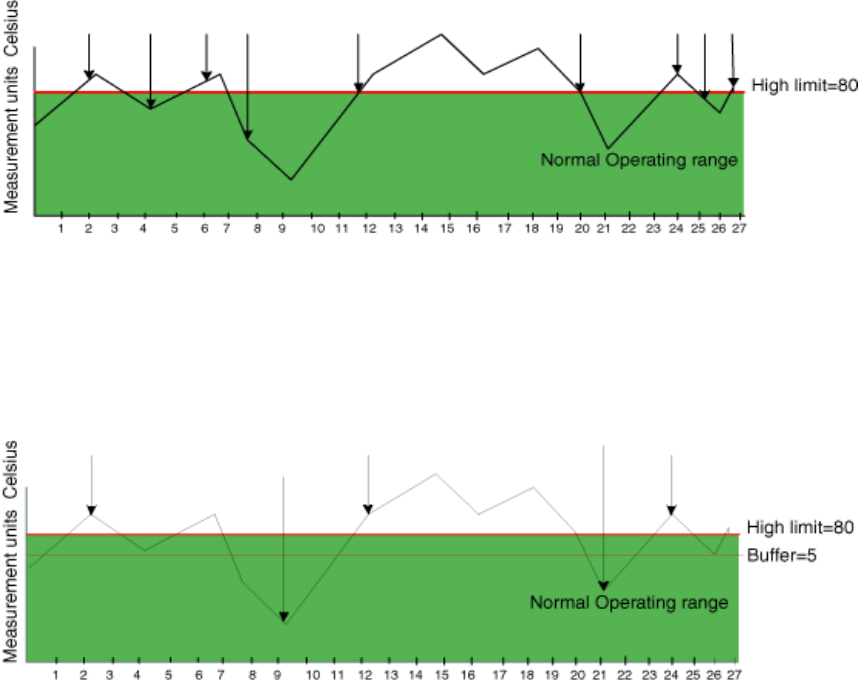HP StorageWorks Fabric OS 5.0.0 Fabric Watch User Guide (AA-RW1TA-TE, May 2005)
Table Of Contents
- Contents
- About this guide
- An introduction to Fabric Watch
- Fabric Watch concepts
- Fabric watch components
- Configuring events
- Port persistence
- Notification methods
- Switch policies
- Interpreting event messages
- Activating and accessing Fabric Watch
- Configuring Fabric Watch
- Configuring Fabric Watch thresholds
- Configuring notifications
- Configuring switch status policy
- Configuring FRUs
- Configuring Fabric Watch using Web Tools
- Configuring Fabric Watch using SNMP
- Generating Fabric Watch reports
- Default threshold values
- Basic Fabric Watch configuration guidelines
- Using Fabric Watch with configuration files
- Glossary
- Index

33Fabric OS 5.0.0 Fabric Watch user guide
Buffer values
You can use buffer values to reduce the occurrence of events due to data fluctuation. When
you assign a buffer value, it is used to create a zone in which events cannot occur both above
the high threshold and below the low threshold.
Figure shows an example in which each time a signal crosses the high limit, an event occurs.
The blue arrows indicate the area where the event criteria is met. In this case, there is a great
deal of fluctuation. Even when the monitor is set to triggered, a number of messages are sent.
Figure 1 Threshold monitoring
Figure shows how to limit the number of event notifications using a buffer. When you specify
a buffer, events cannot occur both above the high threshold and below the low threshold.
Event notification occurs only where the arrow indicates. The event criteria is continued to be
met until the data sensed falls below the high threshold value.
Figure 2 A buffered data region
Time bases
Time bases are time periods within Fabric Watch. This configurable field impacts the
comparison of sensor-based data with user-defined threshold values.










